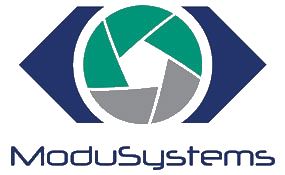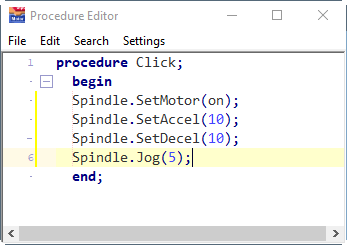
Text Language Definition
procedure T1Axis.Jog;
Description
Jog directs an axis to move at the specified speed indefinitely. If the magnitude of the single precision floating point parameter is smaller than the magnitude of the current speed the axis will slow down at the decel rate. If the magnitude is greater it will speed up at the accel rate. It is possible to jog in the opposite direction with respect to the current speed which causes the axis to come to a stop, reverse direction, and accelerate up to the indicated speed. It is possible to jog at 0 speed. In this condition the move is still considered active even though it is not physically progressing. Jog may supersede a move, changing it into a continuous motion. Jogging is terminated by a Begin Stop, Stop, or Abort.
Although it is possible to use jog to produce movement when searching for home switches or other input events, it is generally a better idea to move a distance which should include the event so that the behavior of the machine if the event is not found is to stop rather than to travel indefinitely. Analagous to the notion of a "time out" such a move could be thought of as a "position out". If the expected event does not occur within the expected distance (as distinct from an expected time) then an error must have occurred.
Jogging is NOT protected by positive and negative limits. Jogging, by it's nature, is a continuous and ongoing move. To realize jogging velocity to the edge of a machine movement, begin a move to the positive or negative limit at the required speed.
Escapes
Jog does not generate any escapes.
Examples

Related Topics
Set Speed
Set Accel
Set Decel
Stop
Begin Stop
Abort
Positive Limit